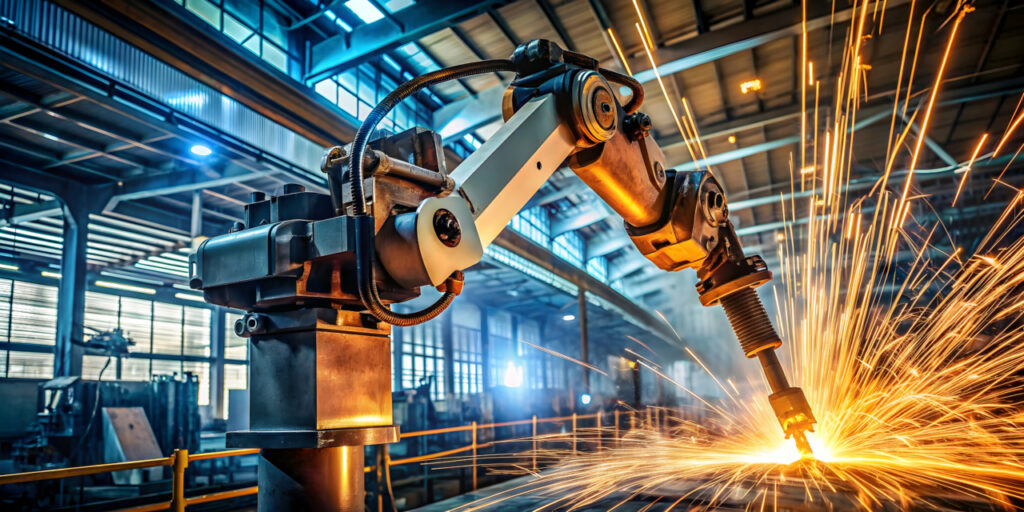The steel manufacturing industry has seen remarkable progress over the past few decades, driven by technological innovations that are transforming the way steel is produced. These advancements are not only making the process more efficient but also significantly reducing the environmental impact. As global demand for steel continues to rise, modern technology is playing a crucial role in shaping the future of the industry.
The Rise of Electric Arc Furnaces (EAF): A Sustainable Future for Steel
Electric Arc Furnaces (EAF) are revolutionizing steel production by offering a more sustainable and energy-efficient alternative to traditional blast furnaces. Unlike conventional methods, which rely on iron ore and coking coal, EAFs primarily use recycled scrap steel, contributing to a circular economy and reducing carbon emissions. The global shift toward EAF technology reflects a broader commitment to sustainability, as companies strive to lower energy consumption and minimize industrial waste.
EAFs melt scrap steel using high-voltage electrical arcs, refining it into high-quality steel. This flexible process consumes less energy and allows plants to adjust output based on market demand.
Continuous Casting and Automation
Another major advancement in steel manufacturing is continuous casting, a process that allows molten steel to be cast directly into slabs or other forms without the need for intermediate steps. This method enhances productivity and reduces the cost of steel production, as it minimizes waste and shortens the production cycle.
Automation and digital technologies are further enhancing the efficiency of steel plants. From furnace control systems to robotic material handling, automation reduces the need for manual labor in dangerous environments and ensures more precise operations. These technologies are also improving quality control, as sensors and AI-driven systems can monitor every stage of production to ensure that each product meets the highest standards.
Key Technologies Revolutionizing Steel Manufacturing
The integration of modern technologies is reshaping steel manufacturing in profound ways. Some of the most significant innovations include:
- Electric Arc Furnaces (EAFs): Reducing energy consumption and allowing the use of recycled steel.
- Continuous Casting: Streamlining the process by casting molten steel directly into final shapes.
- Automation and Robotics: Enhancing precision and safety in steel production.
- Artificial Intelligence (AI): Optimizing production schedules and reducing equipment downtime.
- Renewable Energy Integration: Using solar and wind energy to power steel plants, further reducing carbon emissions.
These advancements not only improve the efficiency of steel production but also make the process more environmentally sustainable. By reducing energy consumption, emissions, and waste, modern technologies are helping the steel industry transition to greener, more responsible practices.
Case Study: Interpipe Steel’s Technological Advancements
One of the standout examples of modern steel manufacturing is Interpipe Steel. This Ukrainian steel plant is renowned for its cutting-edge use of Electric Arc Furnace technology and automation. Interpipe Steel produces a wide range of high-quality steel products, from pipes to railway wheels, all while maintaining a strong commitment to environmental sustainability.
By leveraging EAF technology, the plant is able to recycle scrap steel, minimizing the use of virgin raw materials. Additionally, Interpipe Steel has implemented state-of-the-art automation systems that control everything from furnace temperatures to product quality, ensuring that its output meets global standards. This combination of technology and innovation has made Interpipe a leader in sustainable steel production.
Environmental Sustainability in Steel Manufacturing
Modern technology is helping steel manufacturers reduce their environmental impact. Electric Arc Furnaces, continuous casting, and automation lower energy consumption and emissions. Additionally, many plants are using renewable energy sources like solar and wind, reducing reliance on fossil fuels.
The industry’s focus on recycling is driving the adoption of these technologies. By recycling scrap steel, manufacturers reduce the need for raw materials and industrial waste. As these practices spread, the steel industry is moving toward a more circular and sustainable model.
Conclusion
Technological advancements are shaping the future of steel manufacturing, making it more efficient, sustainable, and adaptable to modern needs. Electric Arc Furnaces, continuous casting, automation, and AI are just some of the innovations driving this transformation. Companies like Interpipe Steel are leading the way, demonstrating how modern technology can be used to produce high-quality steel while minimizing environmental impact. As the industry continues to evolve, the adoption of these technologies will be crucial in ensuring that steel remains a vital and sustainable material for the future.

I am an entertainment geek since my childhood days when I watched Star Wars, DC, MCU and other universe movies. Movies have a special place in my heart and mind too. That’s why, I get addicted to writing and sharing my love of movies with others.





![‘Frankenstein’ Review – Guillermo del Toro’s Definitive Look At The Nature And Nurture Of Monstrosity [TIFF 2025] ‘Frankenstein’ Review – Guillermo del Toro’s Definitive Look At The Nature And Nurture Of Monstrosity [TIFF 2025]](https://cdn.geekvibesnation.com/wp-media-folder-geek-vibes-nation/wp-content/uploads/2025/10/Frankenstein-175_PF_20240430_20377_R-300x200.jpg)
![‘Wake Up Dead Man: A Knives Out Mystery’ Review – In Rian Johnson We Trust [LFF 2025] ‘Wake Up Dead Man: A Knives Out Mystery’ Review – In Rian Johnson We Trust [LFF 2025]](https://cdn.geekvibesnation.com/wp-media-folder-geek-vibes-nation/wp-content/uploads/2025/10/Wake-Up-Dead-Man-A-Knives-Out-Mystery-300x169.jpg)